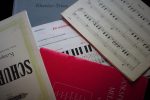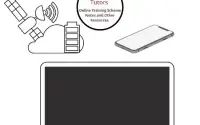Formal Letter Writing Composition English Grammar JSS 1 Second Term Lesson Notes Week 1 and 2

Lesson Notes: Composition – English Grammar JSS 1 Second Term (Week 1)
Captivating Title:
Mastering Formal Letter Writing: Seeking Permission to Be Absent
Focus Keyphrase:
Formal letter writing in English
SEO Title:
Formal Letter Writing
: Features and Writing a Letter of Permission
Slug:
formal-letter-writing-permission-jss1
Meta Description:
Learn the features of formal letter writing and how to write a letter of permission to your school principal. Simplified and engaging for JSS 1 students.
Lesson Plan
Subject:
English Grammar
Class:
JSS 1
Term:
Second Term
Week:
1
Age:
10-12 years
Topic:
Formal Letter Writing
Sub-topic:
Features of a Formal Letter: Writing a Letter of Permission to Be Absent
Duration:
40 minutes
Behavioral Objectives:
By the end of the lesson, students should be able to:
- Identify the features of a formal letter.
- Explain the purpose of a formal letter.
- Write a formal letter to the principal requesting permission to be absent.
Keywords:
Formal letter, permission, address, salutation, subject, closing
Set Induction:
The teacher will ask students if they have ever needed permission to miss school and how they communicated this to their principal or teacher.
Entry Behavior:
Students are familiar with writing informal letters.
Learning Resources and Materials:
- Sample formal letter
- Whiteboard and marker
- Chart showing parts of a formal letter
Building Background/Connection to Prior Knowledge:
The teacher connects the lesson to informal letter writing, explaining the difference between informal and formal letters.
Embedded Core Skills:
- Communication
- Writing skills
- Critical thinking
Learning Materials:
- Sample formal letters
- Lagos State Scheme of Work
Reference Books:
- Lagos State Scheme of Work for JSS 1
- English Grammar textbooks
Instructional Materials:
- Board illustrations
- Chart with labeled formal letter parts
Content
Features of a Formal Letter
- Writer’s Address: Placed at the top right corner of the letter.
- Date: Written directly under the writer’s address.
- Recipient’s Address: Placed at the top left corner, below the date.
- Salutation: “Dear Sir/Madam” is commonly used.
- Subject Heading: A short title stating the purpose of the letter.
- Introduction: The opening paragraph states the purpose of the letter.
- Body: This section provides detailed information about the subject.
- Conclusion: Summarizes the request and expresses gratitude.
- Closing Remark: “Yours faithfully” or “Yours sincerely.”
- Signature and Name: Writer signs their name and writes it in full.
Example Letter
[Writer’s Address]
123 Main Street,
Ikeja, Lagos.
[Date]
28th December 2024.
[Recipient’s Address]
The Principal,
Model High School,
Ikeja, Lagos.
[Salutation]
Dear Sir/Madam,
Subject: Request for Permission to Be Absent
I am writing to seek your permission to be absent from school from January 2 to January 4, 2024, due to a family engagement. My family will be traveling, and I am required to attend.
I assure you that I will cover all the lessons missed during this period and submit any assignments given.
Thank you for your understanding.
[Closing]
Yours faithfully,
(Signature)
John Doe
Evaluation Questions
Fill-in-the-Blank Questions (with options)
- The writer’s address is written at the ____ corner. (a) bottom left (b) top right (c) middle (d) top left
- The salutation in a formal letter is usually _____. (a) Dear Friend (b) Hello (c) Dear Sir/Madam (d) Yours sincerely
- The subject heading is written _____. (a) at the bottom (b) above the salutation (c) after the conclusion (d) below the writer’s address
- In a formal letter, “Yours faithfully” is an example of _____. (a) a salutation (b) a closing remark (c) a subject heading (d) an address
- The date is written directly under the _____. (a) recipient’s address (b) salutation (c) writer’s address (d) conclusion
- A formal letter is written for ____ purposes. (a) official (b) casual (c) humorous (d) fictional
- The purpose of a formal letter is stated in the _____. (a) writer’s address (b) body (c) introduction (d) signature
- The recipient’s address is written on the ____ corner. (a) top right (b) bottom right (c) top left (d) middle
- The signature of the writer is placed _____. (a) at the top (b) below the closing remark (c) after the salutation (d) at the bottom left
- The subject of the letter is also known as the _____. (a) heading (b) salutation (c) conclusion (d) signature
- “Dear Sir/Madam” is an example of _____. (a) a subject (b) a salutation (c) a closing remark (d) an address
- The concluding part of the letter often includes _____. (a) a greeting (b) a request (c) gratitude (d) an explanation
- The introduction of a formal letter is found in the _____. (a) body (b) opening paragraph (c) conclusion (d) signature
- A formal letter must include the ____ of the sender. (a) title (b) phone number (c) address (d) hobbies
- The closing phrase “Yours sincerely” is used when _____. (a) you know the recipient’s name (b) the letter is personal (c) it is a complaint letter (d) the recipient is unknown
FAQs (with answers)
- What is a formal letter?
A formal letter is a letter written for official purposes. - What is the difference between formal and informal letters?
Formal letters are official, while informal letters are personal. - What should a formal letter include?
It includes addresses, date, salutation, subject, body, and closing. - Where is the writer’s address written?
At the top right corner. - What is the purpose of a subject heading?
It gives the main purpose of the letter. - How do you close a formal letter?
By using “Yours faithfully” or “Yours sincerely.” - What is the importance of the date in a formal letter?
It shows when the letter was written. - What is the role of the introduction in a formal letter?
It states the purpose of the letter. - Why is the recipient’s address included?
To identify the person or organization receiving the letter. - How many paragraphs does a typical formal letter have?
Usually 3 (introduction, body, conclusion). - What is the salutation in a formal letter?
A polite greeting like “Dear Sir/Madam.” - What is a closing remark?
A polite phrase used before the signature. - Why is a formal letter important?
It helps to communicate in official settings. - What should not be included in a formal letter?
Slang or informal language. - What is the difference between “Yours faithfully” and “Yours sincerely”?
“Yours faithfully” is for unknown recipients; “Yours sincerely” is for known recipients.
Presentation Steps
- Step 1: Revision of the Previous Topic
The teacher will review informal letter writing. - Step 2: Introduction of the New Topic
The teacher explains the features and purpose of a formal letter. - Step 3: Student Contributions and Corrections
Students identify features in a sample formal letter, and corrections are discussed.
Teacher’s Activities
- Explain the features of a formal letter.
- Display examples on the board.
- Guide students in writing a letter of permission.
Learners’ Activities
- Identify parts of a sample letter.
- Write their own letter of permission.
Assessment
Students will write a formal letter seeking permission for absence, using the format discussed.
Conclusion
The teacher will review key points and provide feedback on students’ written letters.
Related
Related posts:
- Composition English Grammar JSS 1 Second Term Lesson Notes
- Exploring Village Festivals: A Guided Composition English Grammar JSS 1 Second Term Lesson Notes Week 9
- Organizing Ideas: Mastering Logical Sequences in Argumentative Writing Composition English Grammar JSS 1 Second Term Lesson Notes Week 8
- Narrative Writing: The Most Memorable Day of My Life Composition English Grammar JSS 1 Second Term Lesson Notes Week 5
- Federal Road Safety Commission Composition English Grammar JSS 1 Second Term Lesson Notes Week 3 and 4
Related Posts

Mid Term Test Questions Security Education JSS 1 Second Term Weekly Topics

Exploring ICT Applications: How Technology Enhances Our Daily Lives Computer Studies JSS 1 First Term Lesson Notes Week 9

The 99 Names of Allah: Exploring His Attributes Islamic Religious Studies JSS 1 First Term Lesson Notes Week 4
About The Author
Edu Delight Tutors
Am a dedicated educator with a passion for learning and a keen interest in technology. I believe that technology can revolutionize education and am committed to creating an online hub of knowledge, inspiration, and growth for both educators and students. Welcome to Edu Delight Tutors, where learning knows no boundaries.